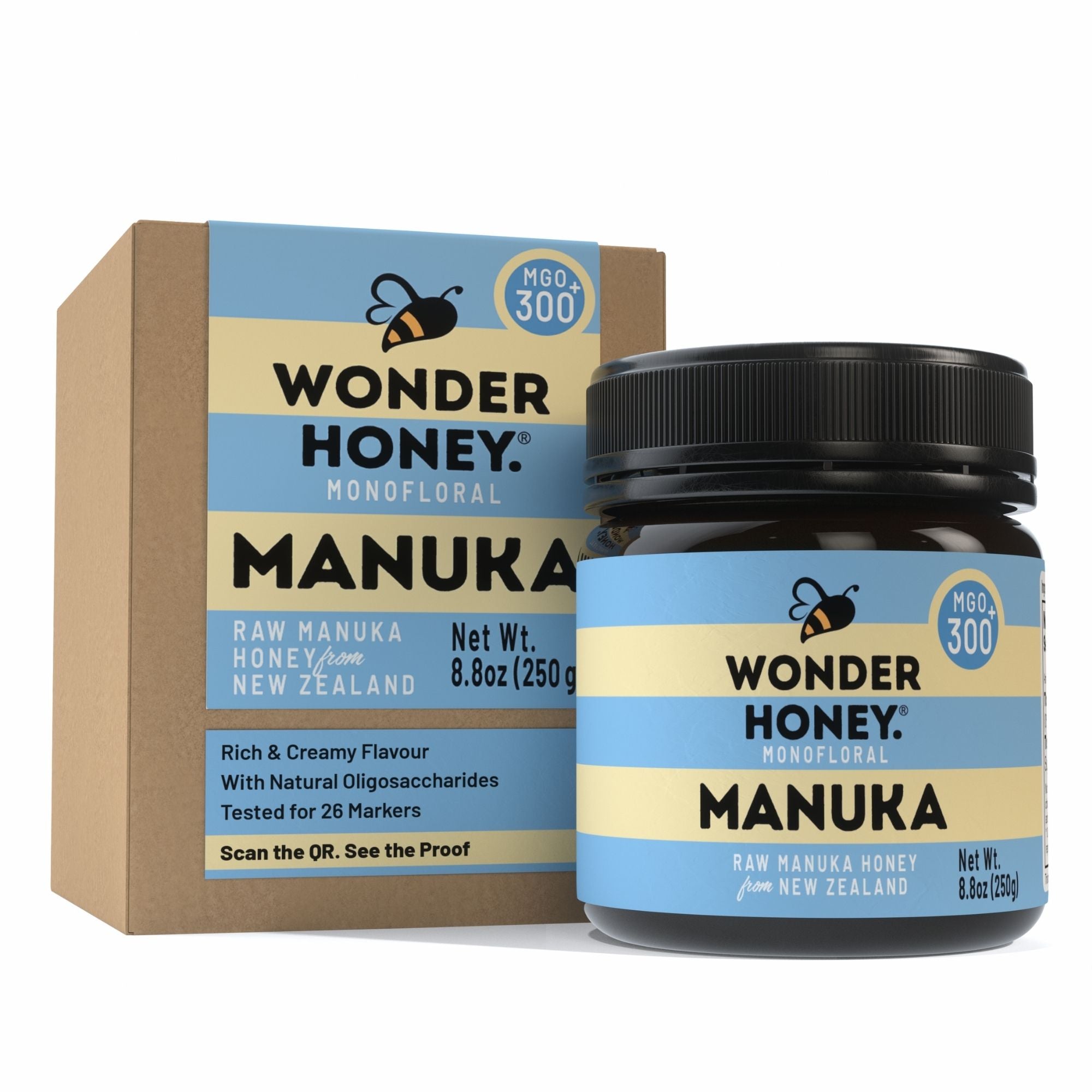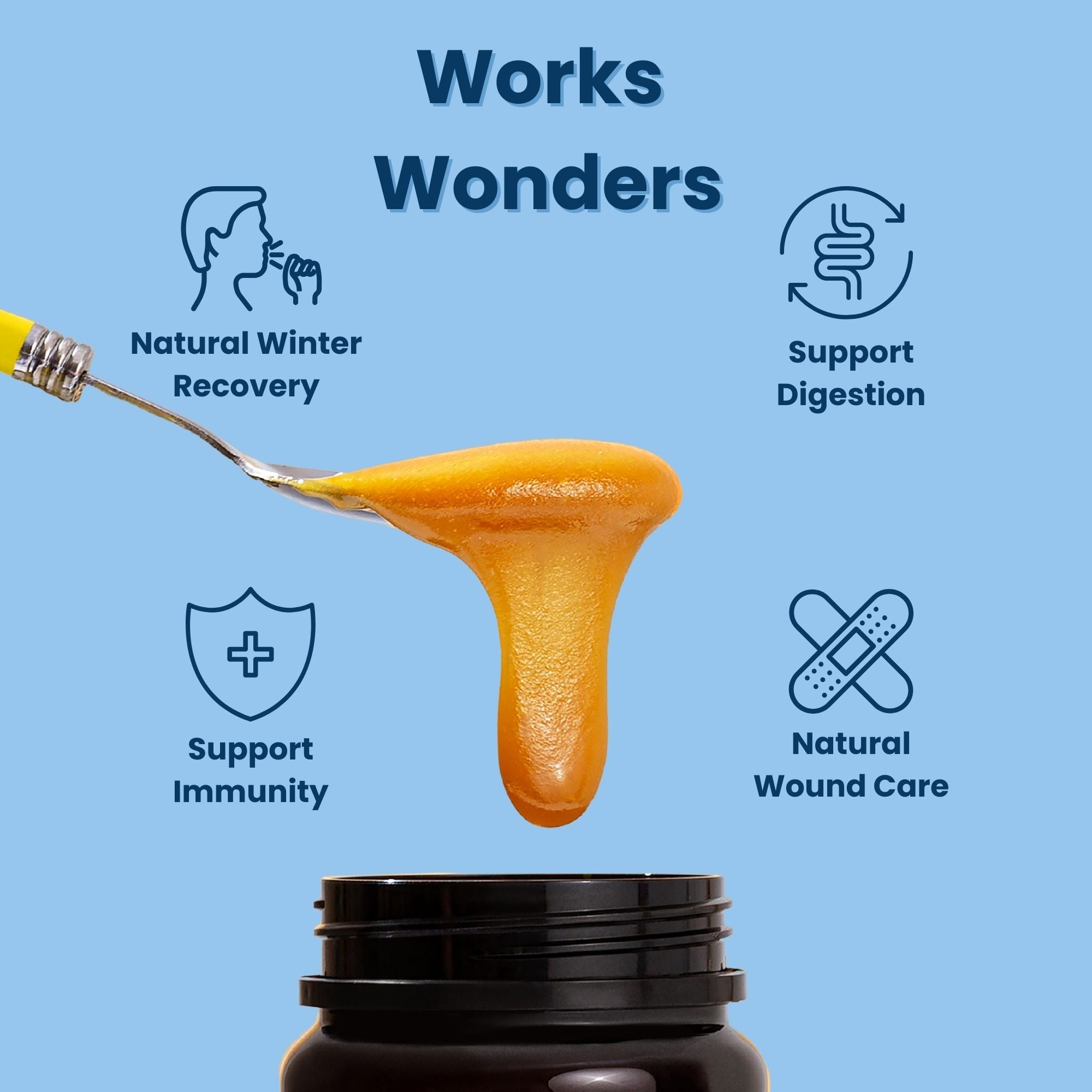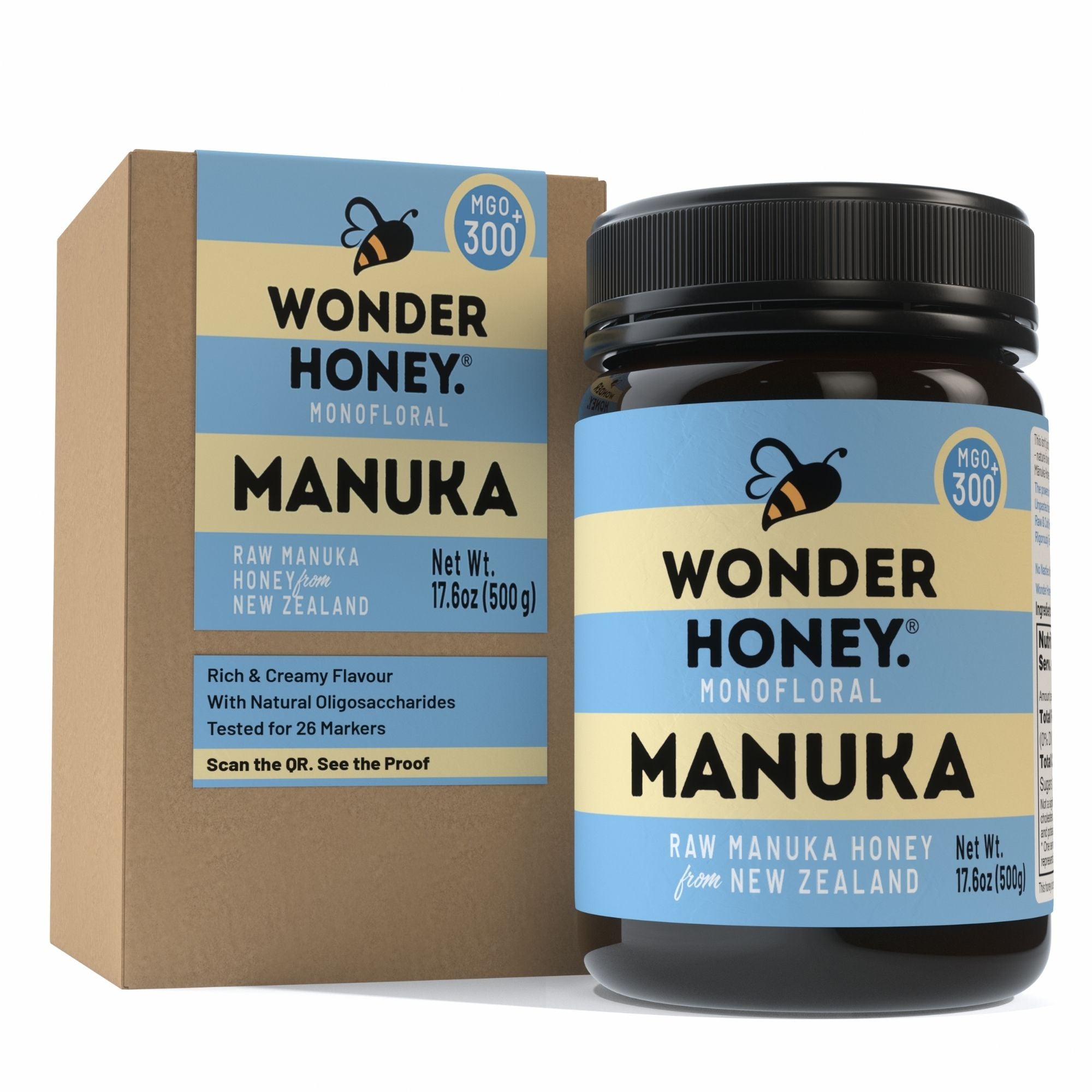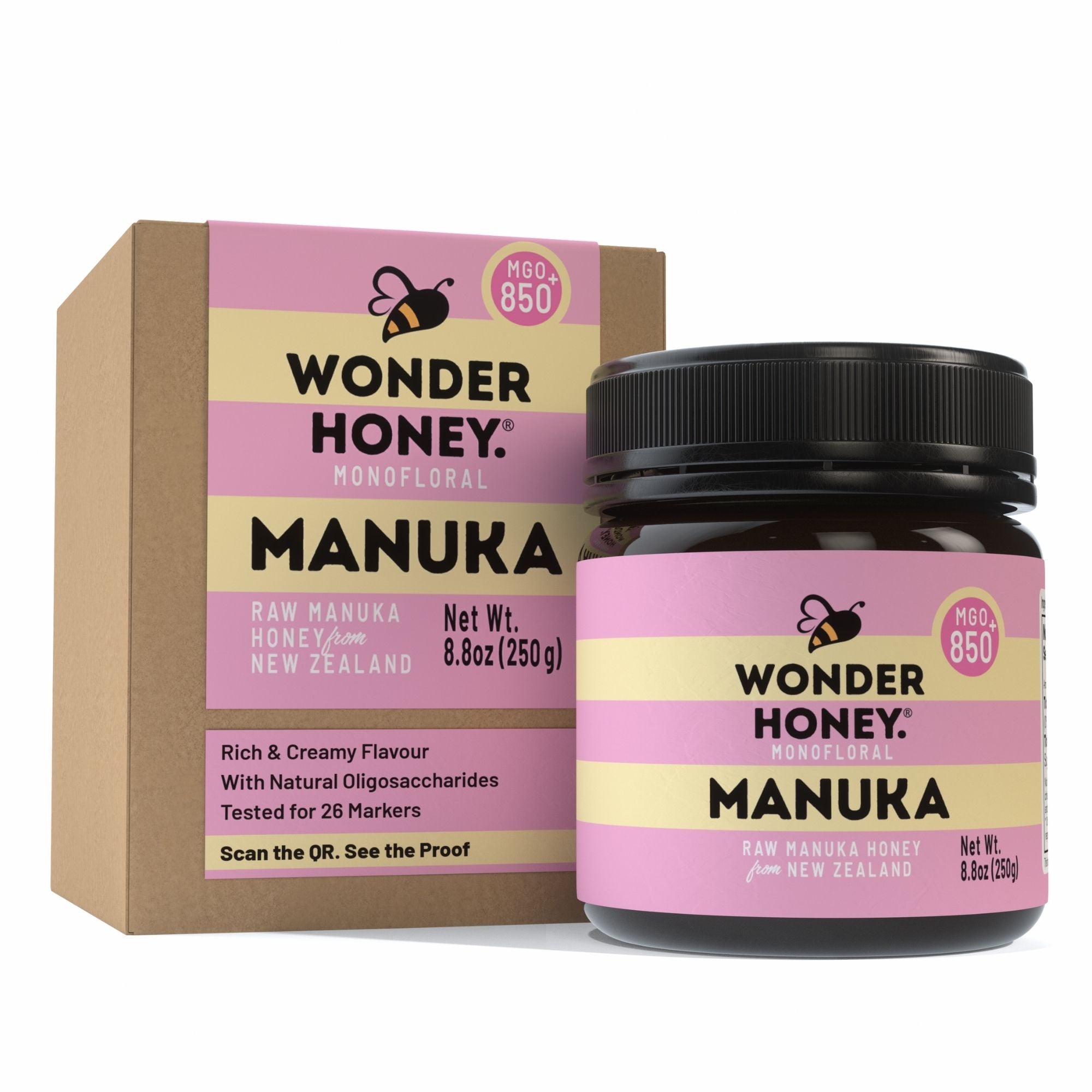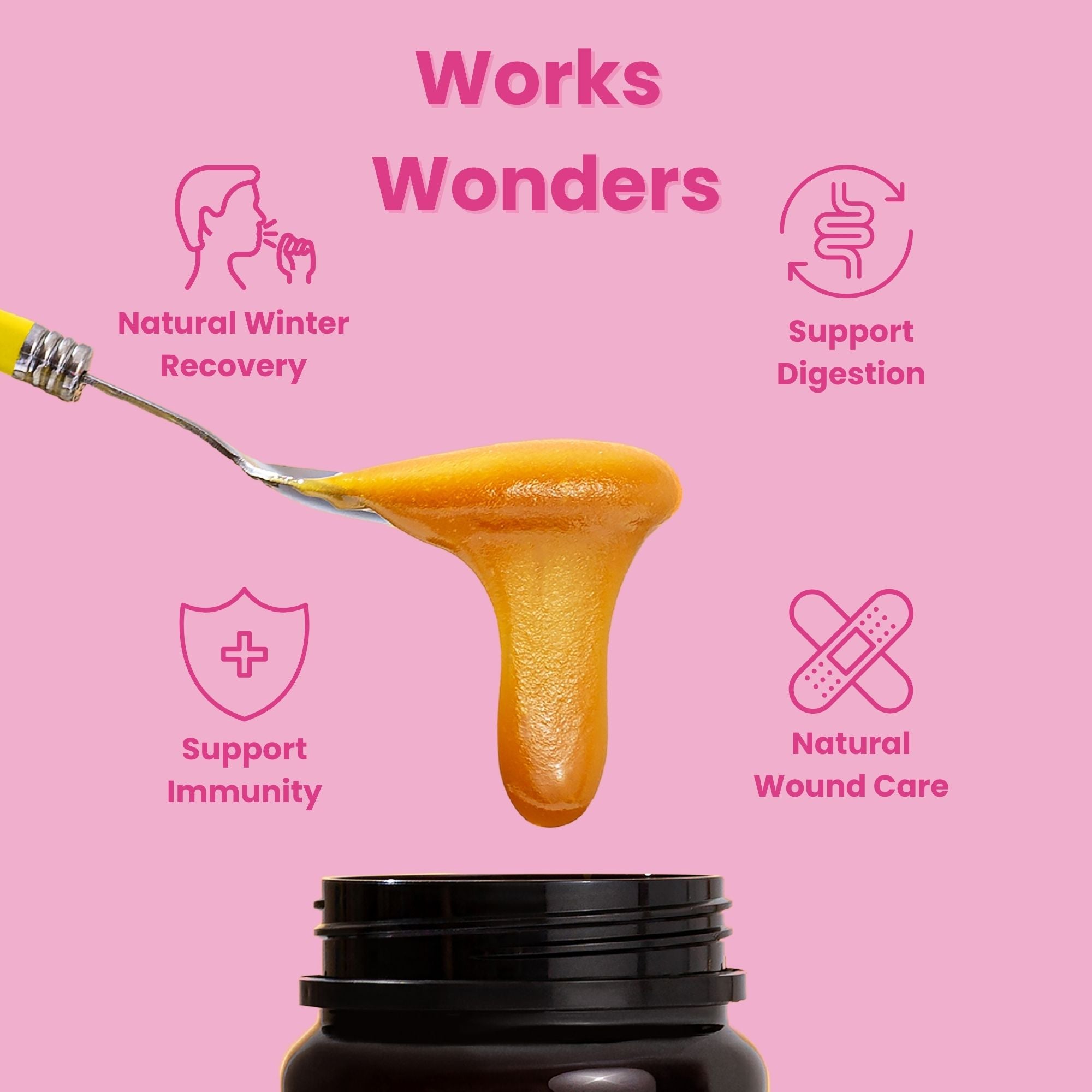Sorry, I have not received my items. FedEx tracking number : 9261290378006801020303
Can anyone help? Thank you 😊
Love the honey tastes great !!
Excellence taste and consistency. I highly recommend.

Manuka honey is derived from the nectar of the Leptospermum scoparium tree, or as the Māori named it - the Manuka tree - which is native to New Zealand.
What sets Manuka honey apart is its unique composition, which includes antibacterial and antimicrobial compounds. The most recognizable compound in Manuka honey is methylglyoxal (MGO). This antibacterial and antimicrobial strength makes Manuka honey a versatile natural remedy for various ailments. It can be used to treat skin conditions, wounds, digestive issues, and colds and flu.

Honey naturally contains hydrogen peroxide, giving it antibacterial properties. However, this effect diminishes quickly over time or with heat exposure. For instance, while fresh honey from a hive can help heal wounds, store-bought honey often loses its antibacterial activity.
In the 1980s, Professor Peter Molan from Waikato University discovered that Manuka honey retained its antibacterial strength even after hydrogen peroxide levels declined. He termed this unique property “Non-Peroxide Activity” (NPA), which became the first grading system for Manuka honey and inspired the UMF™ system.
In 2006, scientists from Waikato and Dresden Universities identified methylglyoxal (MGO) as the compound behind Manuka’s added antibacterial power.

In 2015, New Zealand’s Ministry for Primary Industries (MPI) began developing a test to define Manuka honey. By 2018, they introduced a 5-marker test (four chemical markers and a DNA test) to verify Manuka honey, ensuring all Manuka honey packed in NZ met this standard. This gave consumers confidence in its authenticity.
Prior to 2018, the UMF™ association conducted research and identified a marker called Leptosperin, found in high levels in Manuka honey. However, the NZ government opted for the 5-marker test instead. Testing changes also prohibited using grading systems like Non-Peroxide Activity (NPA) in marketing, as the word 'Activity' is not allowed. As a result, the UMF™ grading system had to adapt.
Meanwhile, MGO remained an acceptable grading method since it measures methylglyoxal levels (mg/kg), providing a clear indicator of antibacterial strength. Today, most countries recognize MGO as the best measure of Manuka honey potency.

Timeline - Manuka Honey in NZ

Traditional Maori Medicine
1200's
The use of Manuka honey for wound healing has roots in traditional Maori medicine in New Zealand.
The Maori applied crushed Manuka leaves or poultices for treating wounds, burns, and infections. They also used the plant for teas and steam inhalation to relieve respiratory and digestive issues, chewed the bark for diarrhea, and used the leaves and bark in baths to soothe skin irritations.
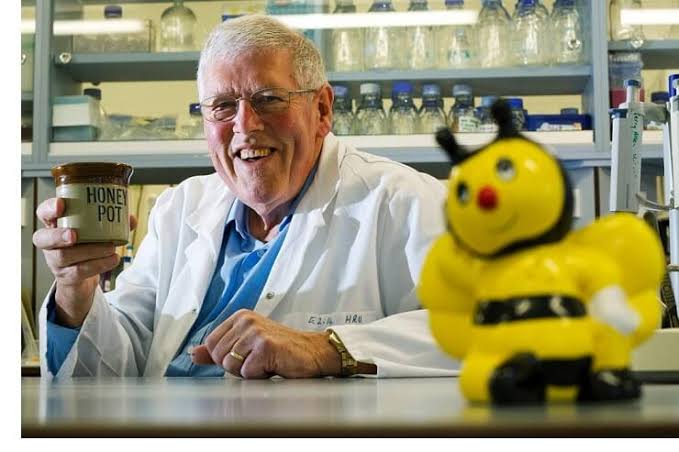
Dr Peter Molan discovers Manuka's unique Antibacterial Properties
1988
Dr Peter Molan - the "godfather of Manuka Honey" - discovered that Manuka honey retained potent antibacterial activity even after the breakdown of hydrogen peroxide, which is the main antibacterial agent in most types of honey. This unique property was initially termed “Non-Peroxide Activity” (NPA)

Professor Thomas Henle discovers Methylglyoxal (MGO)
2006
In 2006, Professor Thomas Henle from the Technical University of Dresden identified methylglyoxal (MGO) as the key compound responsible for Manuka honey’s unique bioactive properties. He demonstrated that MGO levels directly correlate with the honey’s antibacterial potency and overall quality.
Professor Henle emphasized that testing for MGO provides a reliable, scientific, and quantitative method to assess Manuka honey’s bioactivity and authenticity. His research highlighted MGO as a defining marker of the high-grade, natural bioactive characteristics unique to Manuka honey.

Manuka approved for Wound Healing by FDA
2007
Manuka honey began received initial FDA approval for use in wound dressings in 2007. Since then, additional Manuka products with active Manuka honey have been approved, such as hydrogel sheet dressings and gel dressings, further solidifying its role in wound care.
These dressings are used for various wounds, including diabetic foot ulcers, pressure sores, and surgical wounds, due to their antibacterial and healing properties
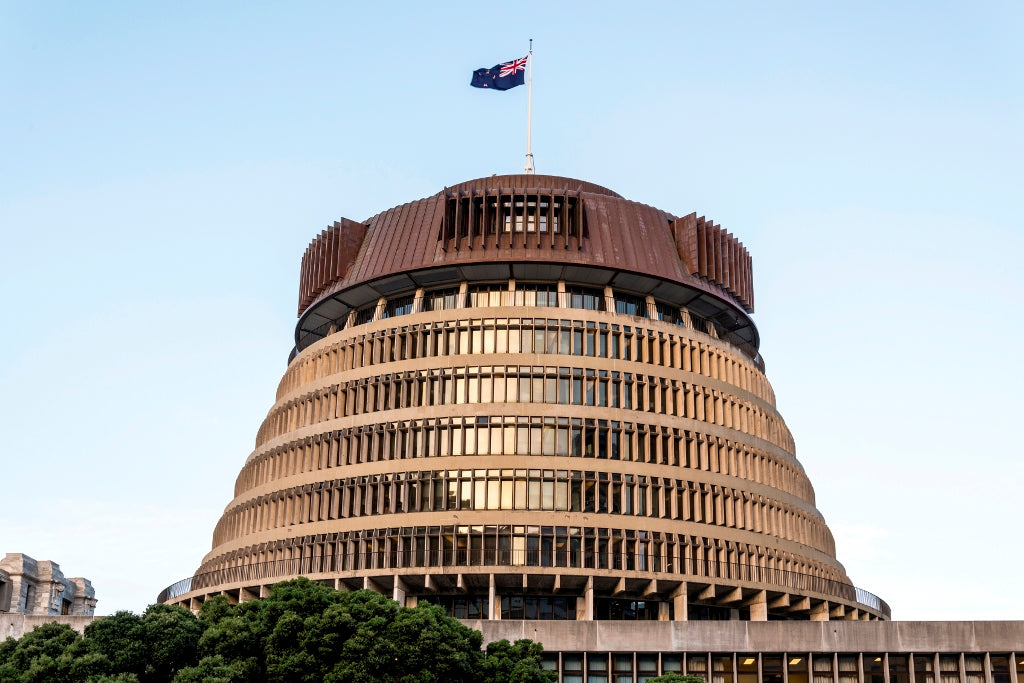
NZ Government introduces scientific definition for Real Manuka Honey regulation
2017
In 2017 the NZ Government put in place strict regulations around the production and labelling of New Zealand Manuka Honey.
All Manuka Honey packed for export must be tested by laboratories certified by the Ministry of Primary Industries (MPI) to make sure it really is Manuka Honey. This has been brought in to protect the NZ based industry from being misrepresented by dishonest overseas packers.
This ensures that all Manuka Honey packed into retail jars in NZ is truly legitimate Manuka Honey
Featured collection
